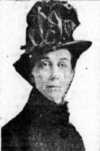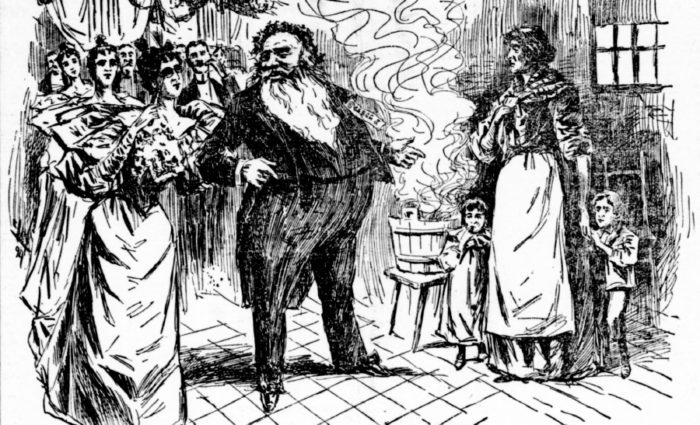
Last week, I gave an overview of Schott’s Alley, which existed for many years in the shadow of the Senate Office Building. As a look at the census records showed, it was the dominion of the laborers and the recently arrived in the city.
Unsurprisingly, Schott’s Alley rarely appeared in the pages of the news during its existence. And when it did, it was usually due to someone’s death, an assault, or a fire – in each case rating at most a paragraph in the inside pages of the papers. Occasionally, however, the alley would rate more ink, such as on Christmas Day, 1894,when someone going by the obvious pseudonym “Pauline Pry” (“Paul Pry” was an 1825 play by John Poole about an inveterate busybody; the name had later been used by Anne Royall as the name of her newspaper) wrote a page one article giving the low-down on this corner of the city. “Pauline Pry” was actually Flora McDonald Thompson, pictured above. She was the wife of AP reporter Charles T. Thompson.
Thompson was introduced to Schott’s Alley and Purdy’s Court by Sara Saffold, who appears to have been another inveterate busybody. Saffold had spent enough time with the Italian immigrants in Schott’s alley to gain their trust, which she repaid by claiming that one local couple, the Rosettis, had sold their twelve year old daughter Theodora to “Mari Papi, an Italian abandoned woman.” On the strength of this complaint, the city had both Theodora and her younger brother Louis taken from their parents and put into a local institutions, with the son landing at the Industrial School. The parents were understandably put out by this and “three times the Rosetti woman, stiletto in hand, has sought to take Mrs. Saffold’s life,” while the father attempted to spring his son from the school.
How much of this story is true is impossible to ascertain at this late date. The fact that neither the Rosettis nor their supposed accomplice, a Mr. Occinero, appear in the city directory of the time hardly means anything. Even the fact that Saffold, who is described as a “missionary” in the article and is listed only as “widow George” in the city directory and makes no other appearances in the newspapers of the day, does not contradict Pry’s reporting. However, the fact that the only “Industrial School” in Washington in 1894 was St. Rose’s – and that was only for young women – does indicate that there were some substantial errors made in the reporting and writing of this article.

What there can be no doubt about is that the article did everything to substantiate all prejudices against Italians that existed at the time, with drunken beatings being seen as the order of the day. Thompson describes meeting a young woman who introduces herself with the words “I want five cents. I want it, and it’s nobody’s business what I want it for.” When denied this, she “whipped up her petticoats, displaying a pair of bare legs like chiseled marble.”
On the other hand, it also does show the good that Saffold attempted to do, whether it was to assist hucksters living in the alley to get the proper license to sell their goods, or to ensure that support given by the readers of the Star to the unfortunates of the alley did not end up in the pocket of the sole storekeeper in the alley or to take the orphans of the alley into her home, where “they sewed, sang, prayed and played.”
Next Week: A different view of the alley.
